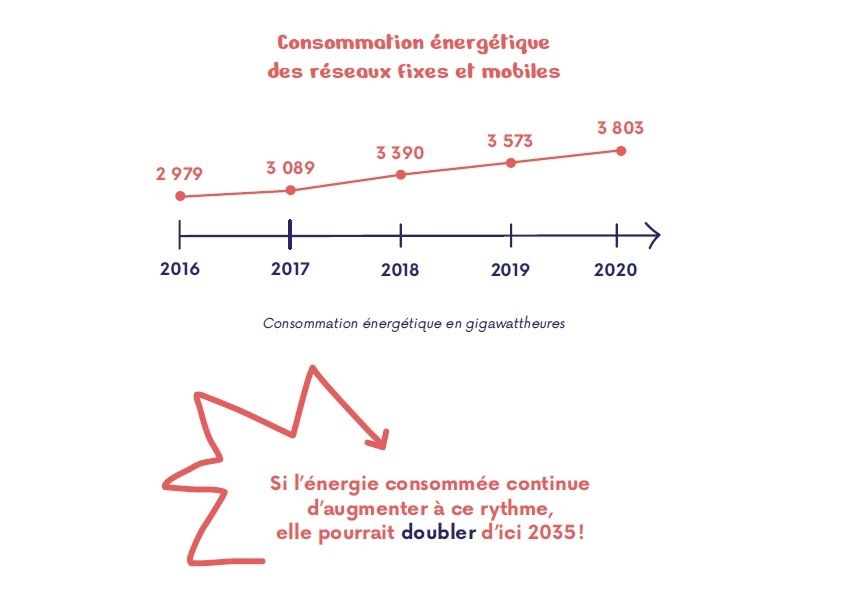The environmental impact of telecom is a follow-up increasingly followed by theArcep, regulator of the sector, under pressure from the government. A first annual survey ” For a sustainable digital provides an update on greenhouse gas emissions, network energy consumption and smartphone recycling/refurbishment activities.
For greenhouse gases, the regulator notes a drop in emissions since 2018 but which is mainly attributed to the transformation of vehicle fleets and improvements in the energy efficiency of buildings. The confinement periods in 2020 have also contributed to reducing this aspect.
On the other hand, the share of emissions linked to the use of the networks (so-called indirect emissions and representing two-thirds of the estimated volume) continues to progress due to the deployment of mobile networks and the increase in the uses made of them.
In terms of energy consumption, there is no miracle: the explosion of digital uses on fixed and mobile networks is leading to an increase in energy consumption of +6% per year, to reach 3800 GWh in 2020.
Arcep notes that telecom networks represent less than 1% of total electricity consumption in France and that mobile telephony represents 58% of electricity consumed.
A big disparity exists on the fixed network side between the copper network (35 KWh per subscription) and optical fiber (less than 10 KWh per subscription, i.e. almost 4 times less).
On the part of the collection of terminals, the annual survey observes that operators represent 38% of telephone sales but with only 2% of refurbished devices, against 13% for the entire French mobile market.
In 2020, 870,000 telephones were collected by operators, a low level linked to confinements, including more than 700,000 for reconditioning. It remains that more than half unused smartphones are kept by their owners, whereas they could often be put back on the market after reconditioning.
.
The post Mobile networks and smartphones: these energy gulfs appeared first on Gamingsym.

